Retro Review: Pro Audio Spectrum 16 - Part 2
November 26th 2021
In Part 1, I began to explore this sound card I picked up in early November 2021 and did some digging into the numerous revisions that MediaVision made to its PAS16 family over its lifetime.
In this Part 2, I look more closely at the card's main ICs and install the driver software.
The Hardware
The PAS16 used a real Yamaha OPL3 chip, the YMF262-M. This was an upgrade on the original PAS which achieved stereo output via two OPL2 chips just like the Sound Blaster Pro did. The YMF262-M essentially comprises two YM3812 OPL2 chips in a single piece of silicon.
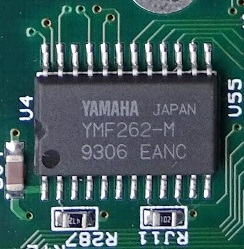
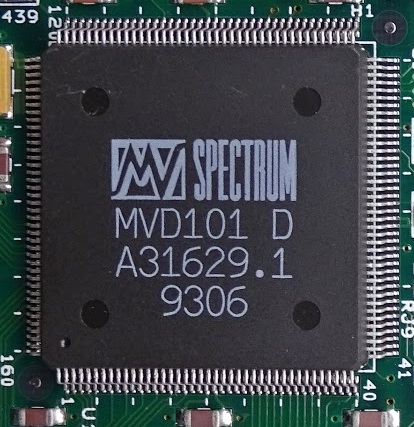
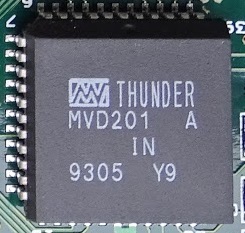
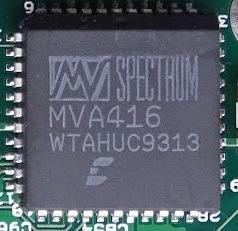
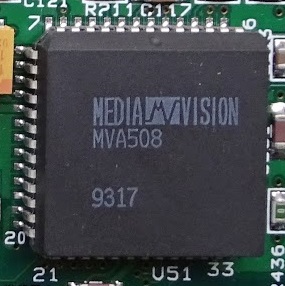
From left: YMF262 FM synthesizer, MVD101 PAS chip, MVD201 Ad Lib/Sound Blaster
emulation chip, MVA416 codec, and MVA508 mixer
The MVD101 chip is the main Pro Audio Spectrum 16 chip. There were only two versions of this chip as far as I can determine - the MVD101 and MVD101D.
The MVD101 can only be found on the original PAS board revision, 0022. All subsequent revisions got the MVD101D which added support for MPU-401 MIDI (UART mode only) and also eliminated the need to select I/O addresses for the Sound Blaster emulation.
The MVD201 chip (also seen badged as 547-0002, and as 547-0001 on the original Thunder Board) was the DSP (Digital Signal Processor) that provided the PAS16 with its Thunder Board- and Sound Blaster 2.01-compatibility. In August 1992, MediaVision was involved in a lawsuit with Creative Labs and as part of the settlement they had to licence Creative Labs' DSP v2.01 code. It is likely that the versions of the PAS16 that had the "THUNDER" logo on this chip (seen in the middle picture above) were pre-this lawsuit settlement, and the ones just etched with 547-XXXX came after it.
The MVA416 is the codec chip. As you can see from the first model revision (650-0022-01), it's actually just a rebadged Crystal CS4216-KL codec. This was an upgrade on the original Pro Audio Spectrum which used separate ADC (Analog-to-Digital Converter) and DAC (Digital-to-Analog Converter) chips for its playback and recording of OPL2 FM synthesis. Some of the PAS16 variants have the MediaVision logo as well as the italicised 'C' logo (denoting Crystal Semiconductor) on this chip.
The MVA508 is the mixer chip. This manages the mixing of all the audio sources, and is controlled via the software mixer utilities - more on this below!
Features
DMA Sharing
The PAS16 came with a DMA sharing jumper for certain motherboards that supported such a feature. Typically, 8-bit sound would use one DMA channel, but 16-bit stereo sound would use two. By default this was disabled, and should remain as such unless you know your mobo can support it.
MIDI Support
Apparently PAS16 cards have poor MPU-401 emulation and also suffer from the famous hanging note bug that so many Creative cards also have. I also read that the PAS16 requires the optional MIDI Mate box and cable to use MIDI with the card. I will look more into this when I get it installed.
The Game/MIDI port has these pinouts, which match the standard for a PC's 15-pin game port:
1 +5VDC
2 JOYSTICK 1 FIRE 1
3 JOYSTICK 1 X
4 GROUND
5 GROUND
6 JOYSTICK 1 Y
7 JOYSTICK 1 FIRE 2
8 +5VDC
9 +5VDC
10 JOYSTICK 2 FIRE 1
11 JOYSTICK 2 X
12 MIDI OUT (GROUND on MIDI Mate and Thunder Board)
13 JOYSTICK 2 Y
14 JOYSTICK 2 FIRE 2
15 MIDI IN (+5VDC on MIDI Mate and Thunder Board)
PC Speaker Out
The Speaker-Out pins found on all but the cost-reduced variant of the PAS16 are interesting. The PAS16 actually listens for PC beeper audio signals on the ISA bus, and sends the audio to these pins after applying some filters. Using the mixer utility, you can apply RealSound(TM) filtering too, though this apparently can be overbearing on the original audio.
Anyway, onto the driver installation....
Setting Up the Pro Audio Spectrum 16
All the MediaVision cards were pre-Plug & Play. Despite this, the PAS16 was one of the first cards to be almost completely jumperless. As was noted in Part 1 where I explored the different board revisions, it was clear MediaVision moved the location of certain jumpers and in some cases eliminated them completely (moving their selection into software).
The Pro Audio Spectrum 16 supports any game that simply refers to "OPL3" in its setup options.
Software Installation
One of the downsides to the PAS line-up is that they all require a driver to be loaded, called MVSOUND.SYS. Without this, you won't even get Ad Lib compatibility. It is a TSR so remains in memory but can be loaded into high memory to keep conventional memory free for games.
Here is the driver disks' INSTALL.EXE process (it looks very MS-DOS-like, even using F3 as the key to exit!):
1) Choosing to install the software and setup hardware, and specifying the directory to install to:
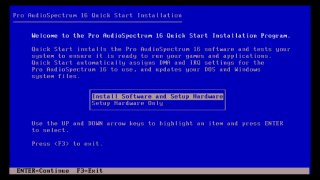
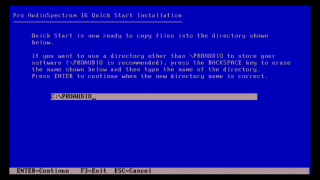
2) Windows question (I said 'no'), and files being copied:
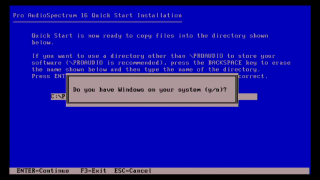
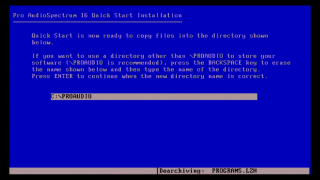
3) Installation complete - I chose not to change the settings:
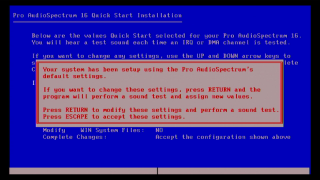
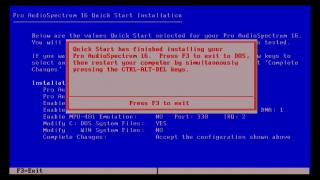
4) Here's the directory contents after installation:
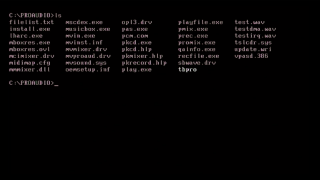
The default settings for the card are 220h, IRQ 5, DMA 1 for the Sound Blaster side of things, and IRQ 7 and DMA 3 for the PAS16 portion.
For older games that needed SOUND.COM to play Ad Lib sound, MediaVision wrote their own driver, called FM.COM.
Apparently a lot of software does *not* require the MVSOUND.SYS driver to be loaded, as they program the Pro Audio Spectrum directly. Perhaps MVSOUND.SYS is just for Ad Lib and Sound Blaster emulation?
If you're using the driver though, you should end up with something like these two lines in your startup files if you want Sound Blaster compatibility to work:
CONFIG.SYS
DEVICE=C:\PROAUDIO\mvsound.sys d:5 q:7 s:1,220,1,5 m:0 j:1
where:
d:5 = the DMA channel used by the PAS16 portion of the card (valid options are 0 through 7)
q:7
= the IRQ used by the PAS16 portion of the card (valid options are 2-7 and 10-15)
s:1,220,1,5 = the Sound Blaster settings
m:0 = MIDI port enabled/disabled (valid options are 0 for disabled and 1 for enabled)
j:1 = Joystick enabled/disabled
(valid options are 0 for disabled and 1 for enabled)
v:75 = Initial volume setting (valid options are 0 through 100)
t:1 = Oscillator to use (valid options are 0 to use the motherboard's oscillator, 1 to use the on-board oscillator)
AUTOEXEC.BAT
SET BLASTER=A220 I5 D1 H1 P388 T6
The Pro Audio Spectrum 16 has the ability to use separate DMA and IRQ settings for Windows and DOS. Having separate ones allows Windows to take advantage of the higher 16-bit DMA channels (5 and up), while DOS can use DMA 1 or 3 which are 8-bit. When switching from DOS to Windows or back again, the PAS16 must reset itself, which during certain situations can cause Windows 3.1 to hang if it is playing wave audio while a DOS program is running.
Now I have the device drivers installed, we're ready to begin testing in games! Look out for Part 3 when I do some audio recording of some top DOS games!